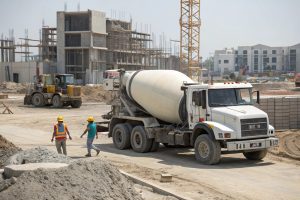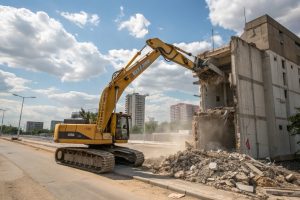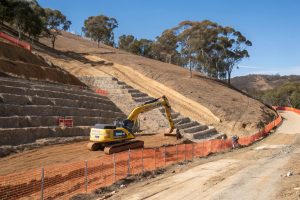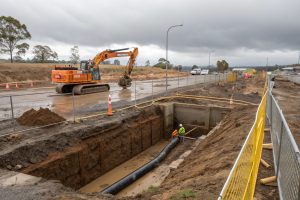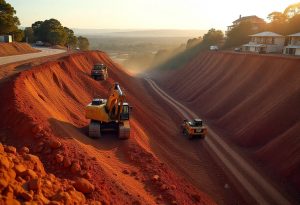Professional Site Preparation Services in Canberra ACT
Expert Site Preparation in Canberra
At Ace Concreting Canberra, we’ve been preparing construction sites across the ACT for over 15 years. We’ve worked on everything from single residential lots in Forrest to multi-hectare commercial developments in Fyshwick. Our team knows Canberra’s unique ground conditions – from the clay soils in Tuggeranong that expand and contract with moisture, to the rock formations around Red Hill that need specialized removal techniques.
We handle the complete preparation process: clearing vegetation, excavating to grade, coordinating soil testing, managing drainage installation, and getting your site construction-ready. Whether you’re a homeowner planning a custom build or a property developer managing multiple lots, we prepare sites that meet ACT planning requirements and give builders a solid platform to start construction.
Our service covers all of Canberra – from established suburbs like Yarralumla and Deakin to the growth corridors in Gungahlin and Molonglo Valley. We work with local geotechnical engineers, understand ACT’s environmental compliance requirements, and coordinate with utility providers to get underground services ready before construction begins.
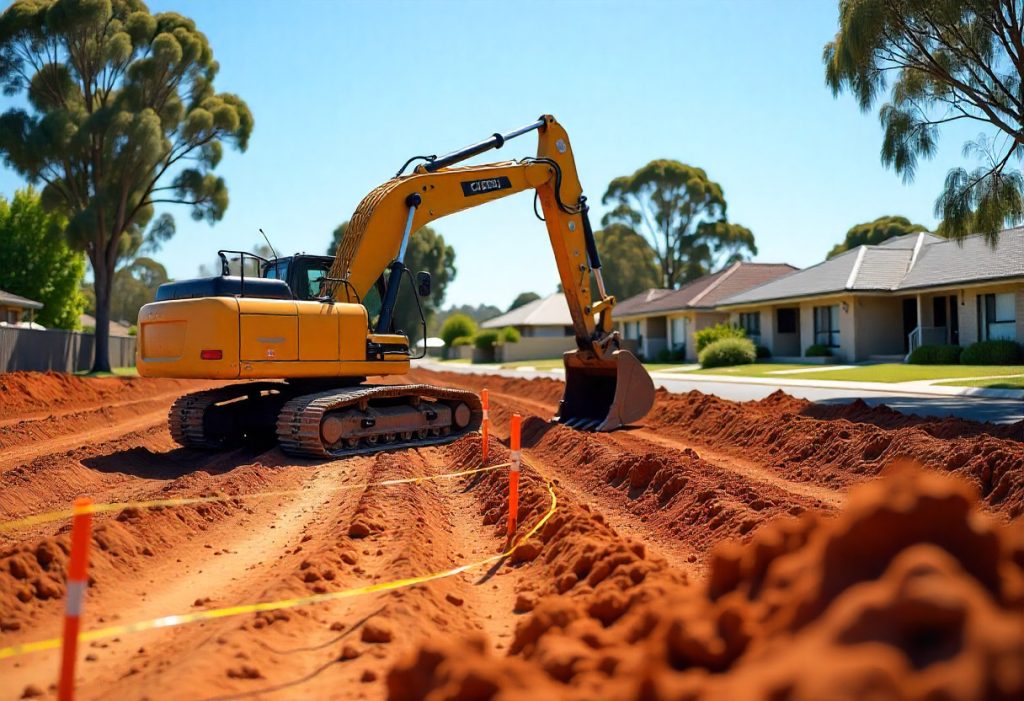
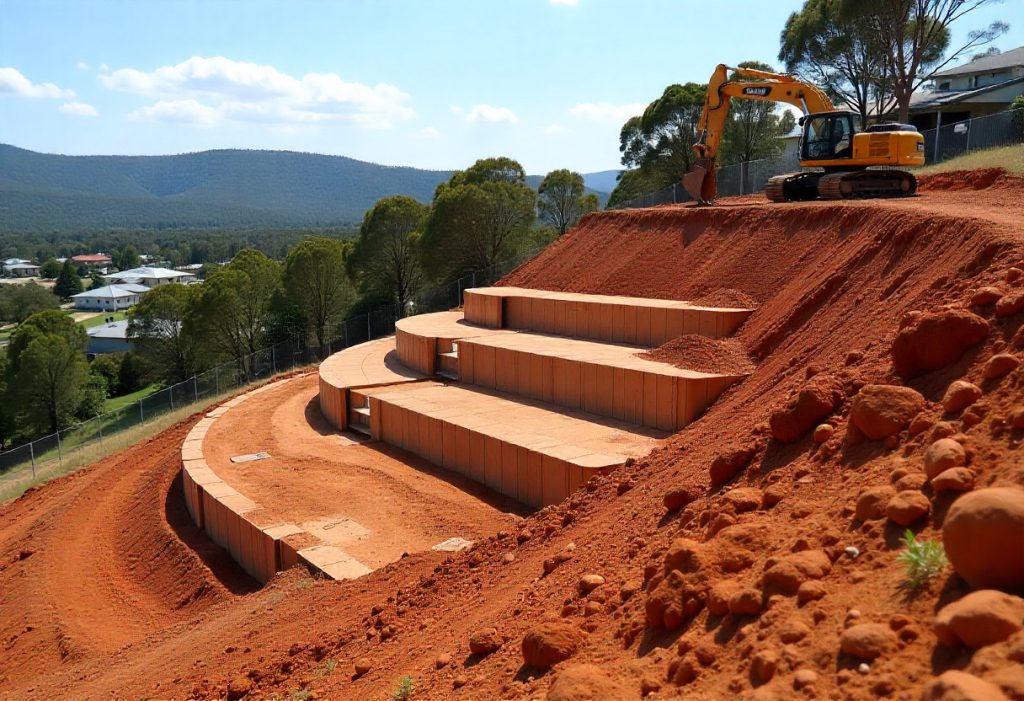
Working with Canberra’s Unique Ground Conditions
Canberra’s geology is unpredictable — from reactive clay and volcanic rock to shifting soil and harsh seasonal extremes. Site preparation here demands local expertise. Clay soils in areas like Tuggeranong expand and contract, requiring moisture control, drainage systems, and stable fill materials. In rocky suburbs like Red Hill or Mount Ainslie, excavation methods vary from ripping to rock hammering, often reusing crushed rock for drainage. Weather adds more complexity — summer heat, winter frost, and autumn rains all affect soil stability. Older suburbs may also contain contaminated or asbestos-laced fill, requiring environmental testing and safe disposal. At every stage, compliance with ACT planning, erosion control, and vegetation protection regulations ensures projects are safe, legal, and built to last.
What Site Preparation Actually Involves
Land Clearing and Vegetation Removal
We remove existing vegetation, trees, and ground cover according to your development approval. In Canberra, this often means working around protected trees or preserving specific vegetation areas required by environmental conditions. We coordinate with arborists when needed and handle all green waste removal to approved ACT facilities.
For sites with significant tree coverage – common in older suburbs like Forrest or Red Hill – we work carefully to protect trees marked for retention while clearing approved removal areas.
Site Excavation and Cut/Fill Operations
Cut means removing soil from high areas. Fill means adding soil to low areas. Sounds simple, but getting the balance right determines whether you’re trucking in expensive fill material or paying to haul away excess soil.
We calculate cut/fill volumes from engineering drawings and aim to balance earthworks on-site when possible. On sloping Canberra blocks – and we’ve got plenty around Aranda, O’Connor, and Campbell – this often means creating level building platforms while managing the excess material for landscaping or retaining wall backfill.
Soil Testing Coordination and Preparation
We don’t do the actual geotechnical testing – that’s for specialized engineers – but we coordinate the process and prepare the site for testing.
This includes:
• Providing excavator access for test pit locations
• Exposing soil layers for engineer inspection
• Taking samples to required depths
• Coordinating follow-up testing if initial results show issues
Building Pad Preparation and Leveling
Once excavation is complete, we create the actual platform where buildings will sit. This involves:
• Excavating to formation level specified by engineers
• Creating level surfaces for slab foundations
• Preparing stepped foundations on sloping sites
• Establishing accurate heights and grades for drainage
• Compacting subgrade to specified density
Drainage System Installation
Water management makes or breaks site preparation, especially in Canberra where we get everything from summer downpours to winter freezes. We install:
• Stormwater pipes and pits according to civil drawings
• Agricultural drainage in areas with high water tables
• Surface drains to protect excavated areas during construction
• Temporary sediment controls required by ACT regulations
Access Road Construction and Temporary Infrastructure
On residential lots in established suburbs, this often means protecting existing curbs and footpaths while creating access that won’t damage underground services. Commercial sites need larger access provisions – a concrete pour for a warehouse slab might involve 40+ truck movements in a single day. We prepare:
• Temporary access roads with compacted base material
• Turning areas for concrete trucks and crane deliveries
• Laydown areas for material storage
• Site office and amenities locations
The Site Preparation Process from Start to Finish
Every site preparation job follows roughly the same sequence, but the timeline and complexity changes based on ground conditions, site size, and what you’re building. Understanding this process helps property owners and developers plan realistic schedules and budgets.
We prepared a residential site in Curtin two years ago that showed why sequence matters. Developer wanted to rush and start excavation before the geotechnical report came back. “It’s just a house, we’ve built dozens of them,” he said. We pushed back, waited for the report. Good thing – turned out the site had uncontrolled fill from previous demolition work. If we’d excavated to normal depths and poured a slab, the building would’ve settled unevenly within months. Instead, we removed the dodgy fill, brought in engineered material, and created a stable platform. Added two weeks and some cost, but saved the developer from a foundation failure.
Site Preparation for Different Property Types
Residential Site Preparation in Canberra
Preparing residential building sites in Canberra requires precision and planning. Many blocks in suburbs like Red Hill and Forrest have limited access and tight boundaries, demanding smaller machinery and coordination with neighbors. Narrow streets, noise restrictions, and ACT construction hour limits add further challenges. Underground services such as gas, water, and power are everywhere, so we always locate and hand-expose them for safety.
Commercial and Industrial Sites
Preparing commercial and industrial sites in Canberra demands large-scale coordination and precision. Projects in areas like Fyshwick often involve massive earthworks—sometimes thousands of cubic metres—requiring efficient truck logistics and material management. Subgrades are engineered for heavier loads such as forklifts and trucks, meeting strict 98% compaction standards.
Multi-Unit Development Sites
Preparing townhouse and apartment sites requires precision and coordination. Unlike single homes, these projects involve multiple building pads, shared driveways, and complex drainage systems that must align perfectly with engineering plans. We handle shared service trenching for water and sewer mains, ensuring proper sequencing with plumbing teams. On sloped sites, retaining wall foundations and drainage are integrated into the prep to prevent costly rework.
Sloping and Challenging Sites
Many Canberra properties sit on challenging terrain, requiring specialized excavation and stability planning. We create stepped foundations for multi-level builds, balance cut-and-fill to manage soil movement, and ensure temporary slope stability during works. Proper drainage is critical—our team designs systems that control runoff and prevent erosion on steep or uneven sites. Whether it’s Mount Ainslie or Black Mountain, we prepare sloping blocks safely and to engineering standards.
Rock Sites
Excavating in Canberra’s rocky areas like Red Hill or Yarralumla requires precision and planning. We assess rock types to choose the right methods—ripping, hammering, or drilling—while balancing cost and stability. Rock removal is slower and noisier than soil work, so we coordinate with engineers, manage vibration and noise impacts, and reuse suitable rock for drainage or base material whenever possible.
If you’re ready to take the next step and get started on your concrete job with Canberra’s best concreter, contact us now for a no obligation quote.
Ready to Start Your Site Preparation Project?
Site preparation determines whether your construction project starts on solid ground or faces problems from day one. The difference between proper preparation and cutting corners shows up in foundation performance, building longevity, and long-term property value.
We’ve prepared hundreds of construction sites across Canberra over the past 15 years – from compact residential blocks in inner suburbs to sprawling commercial developments in industrial areas. Every site teaches us something about Canberra’s ground conditions, regulatory requirements, and effective preparation approaches.
Your project deserves contractors who understand local conditions, work to engineering specifications, and communicate clearly throughout the process. We coordinate with your builder, engineer, and service authorities to deliver construction-ready sites that meet ACT compliance requirements and provide solid platforms for construction.
Whether you’re planning a custom home in Red Hill, developing townhouses in Gungahlin, or preparing commercial sites in Fyshwick, we handle the complete preparation process: clearing, excavation, drainage installation, service coordination, and final certification.
Frequently Asked Questions About Site Preparation in Canberra
Canberra’s geology varies drastically from suburb to suburb — you might find clay, rock, or sand within the same block. Combined with extreme temperature changes and reactive soils, proper preparation requires expert local knowledge.
Reactive clay expands when wet and shrinks when dry, which can cause foundation movement and cracking. Site preparation includes proper drainage, moisture control, and soil stabilization to reduce movement and protect your slab.
We assess the rock type first — weathered shale can be ripped with excavators, while solid granite may need hydraulic breakers. When possible, we reuse crushed rock for driveways or drainage to save costs.
Yes. Summer heat, winter frost, and autumn rains can delay compaction or excavation. Planning the work during mild weather seasons — spring or early autumn — ensures better soil conditions and fewer delays.
Work stops immediately, and environmental consultants test the soil. Contaminated or asbestos-containing material is safely removed under ACT regulations, and validation testing confirms the site is clean before continuing.
Yes, in most cases. The ACT requires erosion and sediment control plans, vegetation protection, and compliance with development approval conditions before any major earthworks begin.
